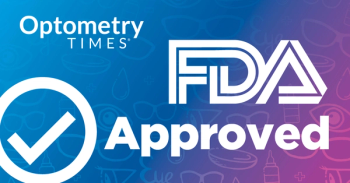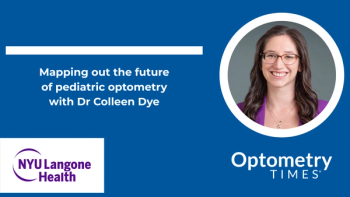
VSP Vision surpasses sustainable eyewear frame goal
The company is producing 53% of its eyewear frames from sustainable materials, according to VSP's 2024 Impact Report.
The recent 2024 Impact Report released by VSP Vision highlights an increase in the percentage of frames made from sustainable, recycled, and biobased materials by the company. VSP has a goal of producing 50% of its eyewear frames from sustainable materials by 2025, and has documented a current percentage of 53%, according to a news release. This marks a 61% increase from 2023.1
“I’m incredibly proud of the thousands of VSP employees whose dedication and sense of care are what drive these programs,” said VSP Vision President and CEO Michael Guyette in the release. “I’m also grateful for the members, clients, and doctors whose engagement with VSP makes all of this possible. This year, we will continue to build on the work of the past as we mark our 70th anniversary, a milestone that serves to remind us all about the potential we can achieve together.”
As part of its sustainability efforts, VSP switched to producing sustainable demo lenses made from 100% recycled postconsumer content and is GRS-certified. The company has also discontinued using polyvinyl chloride nose pads, commonly used in the eyewear industry. Greener packaging solutions were also implemented in the use of polybags that are made from 100% recycled postconsumer content and GRS-certified, which diverted 31 tons of plastic from landfills in 2024. VSP has diverted 66 tons since 2023.1
Additionally, VSP has invested more than $11.3 million in direct and in-kind funding with the goal of increasing equitable access to vision care in 2024. Last year, the company provided 252,000 people in need with access to free vision care through its VSP Vision Eyes of Hope initiative. In total, the program has now helped more than 4.3 million patients. In 2024, 201,000 pairs of eyewear were donated, making the program’s total 2.9 million.1
The company also invested $695,000 in relief to communities affected by Hurricanes Helene and Milton, among other natural disasters. The total donated for disaster relief is now $21.4 million. Scholarships and grants were also supported in the investment of $335,000 in 2024 for optometry students, with more than $4 million invested to date.1
Other academic initiatives taken on by VSP last year include the launching of the Future Leaders Academy, a professional development program for recent graduates and early-career optometrists, which works to develop leadership skills.1
On the inclusion front, VSP cited an improved onboarding process for new employees, which has led to retention rates 17% above industry standards. As a result, VSP won the Training Magazine APEX Award and Great Place to Work Certification. In partnership with VSP Business Resource Groups, VSP also launched the “Special Fit” page on its online eyewear store Eyeconic. The page supports patients with Down syndrome and other patients who may need large or small fits, low bridge, or high prescription.1
VSP employees also showed out to volunteerism opportunities in 2024, rising by 41% to over 16,200 volunteer hours that helped raise $506,000 for almost 1500 nonprofits.1
Reference
VSP Vision releases 2024 Social Responsibility Impact Report; exceeds sustainable eyewear frame goal. News release. VSP Vision. June 23, 2025. Accessed June 24, 2025.
Newsletter
Want more insights like this? Subscribe to Optometry Times and get clinical pearls and practice tips delivered straight to your inbox.



















































.png)


